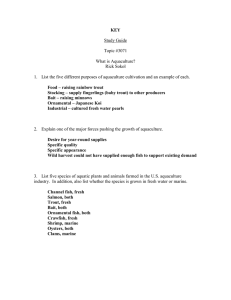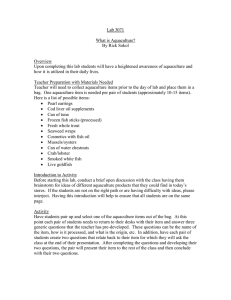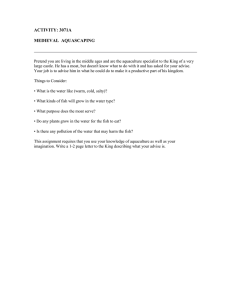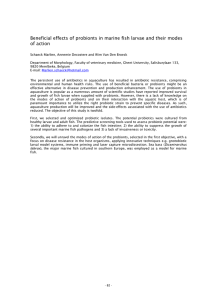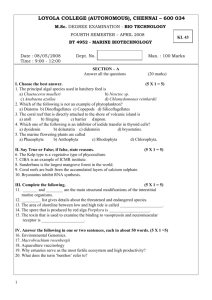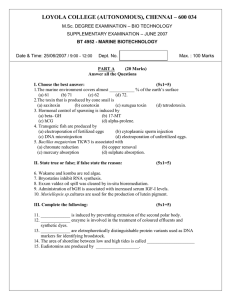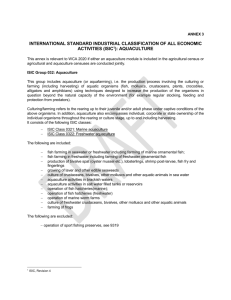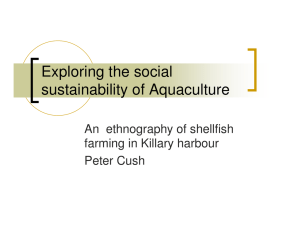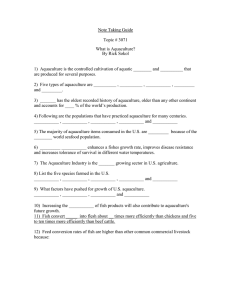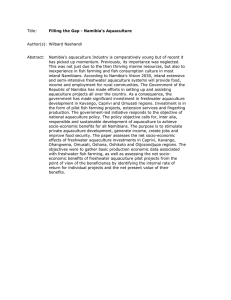2-2 preamble_compr_DE_FIN_FEAP
advertisement
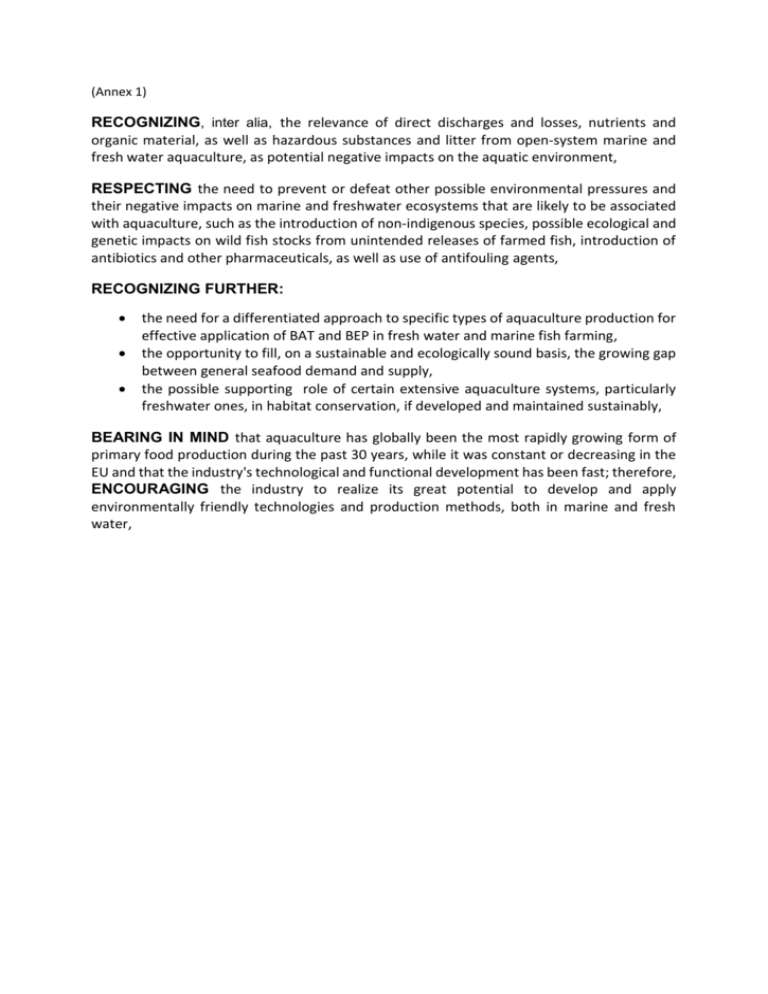
(Annex 1) RECOGNIZING, inter alia, the relevance of direct discharges and losses, nutrients and organic material, as well as hazardous substances and litter from open‐system marine and fresh water aquaculture, as potential negative impacts on the aquatic environment, RESPECTING the need to prevent or defeat other possible environmental pressures and their negative impacts on marine and freshwater ecosystems that are likely to be associated with aquaculture, such as the introduction of non‐indigenous species, possible ecological and genetic impacts on wild fish stocks from unintended releases of farmed fish, introduction of antibiotics and other pharmaceuticals, as well as use of antifouling agents, RECOGNIZING FURTHER: the need for a differentiated approach to specific types of aquaculture production for effective application of BAT and BEP in fresh water and marine fish farming, the opportunity to fill, on a sustainable and ecologically sound basis, the growing gap between general seafood demand and supply, the possible supporting role of certain extensive aquaculture systems, particularly freshwater ones, in habitat conservation, if developed and maintained sustainably, BEARING IN MIND that aquaculture has globally been the most rapidly growing form of primary food production during the past 30 years, while it was constant or decreasing in the EU and that the industry's technological and functional development has been fast; therefore, ENCOURAGING the industry to realize its great potential to develop and apply environmentally friendly technologies and production methods, both in marine and fresh water,
